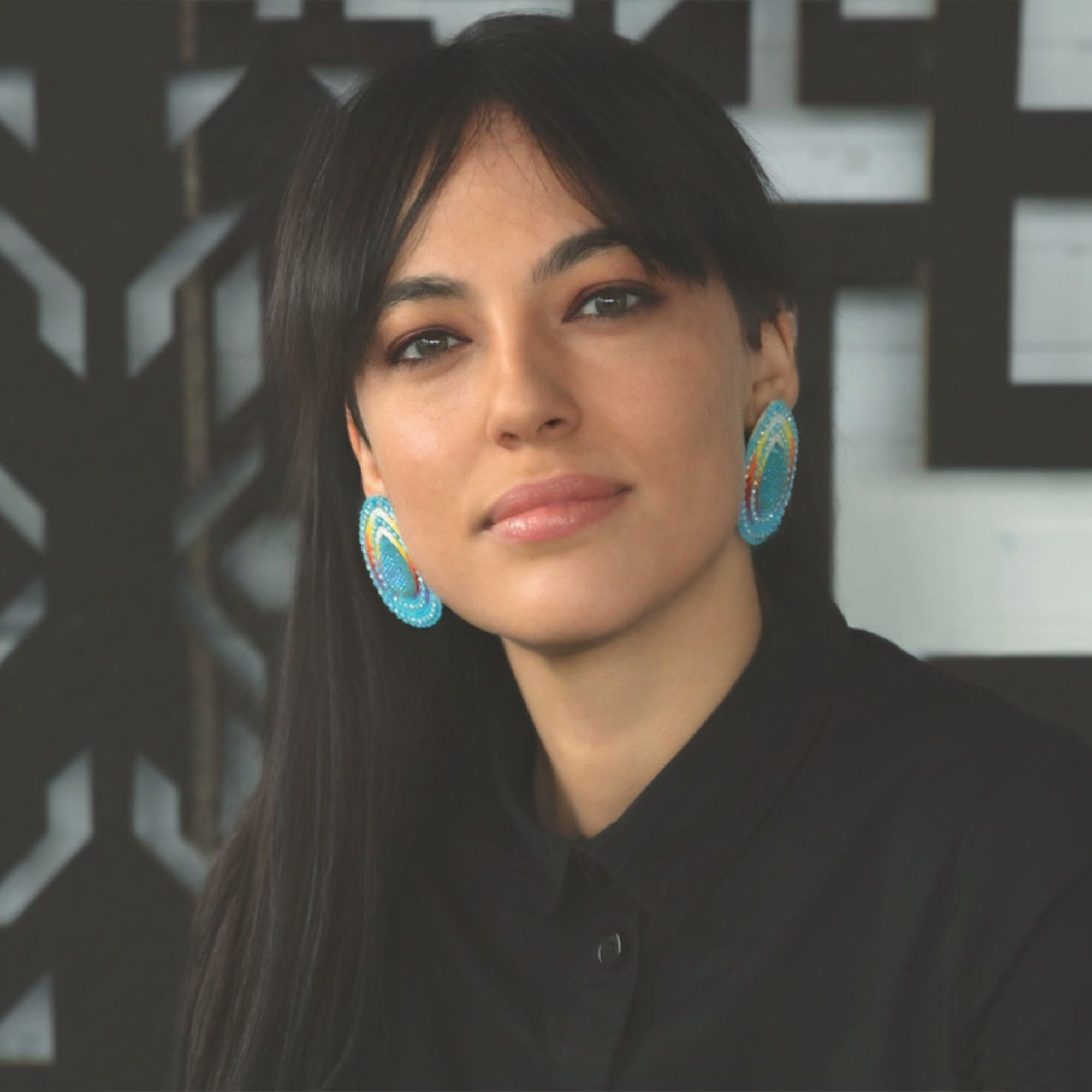
20 Jun Caroline Monnet
As part of June’s #MainArtist and for National Indigenous Peoples Day, Caroline Monnet offers her knowledge in words, her generosity in spirit and her resilience in the dance. In her work and her words, resurgence flows and we look forward to seeing her upcoming artwork.
In addition to her #MainArtist contribution, Caroline joined Main Film for a residency in Indigenous Arts supported by the Conseil des Arts de Montréal, for her project Pidikwe currently in post-production. It was an honour to collaborate with you Caroline.
- Pidikwe (post-production), video installation, 2024
- Bootlegger, feature film, 2021
- The Seven Last Words, essay film, 2019
- Emptying the Tank, short documentary film, 2018
- Creatura Dada, short fiction film, 2016
- Tshiuetin, short documentary film, 2016
- Mobilize, exhibition, 2015
- Roberta, short fiction film, 2014
- The Black Case, short fiction film, 2014
- Gephyrophobia, short documentary film, 2012
- Ikwé, short experimental film, 2009
❝ In Anishinnabe culture, there are 6 seasons. There’s pre-winter, Oshkibiboon, the season when the ice freezes, and pre-spring, Ziigwan, the season when the ice breaks up.
These seasons are both very important, as they are generally associated with physical and personal movement.
They are important periods of transition.
Ziigwan.
That moment when everything melts, but winter hasn’t said its last word.
When snow holds back its season and winter insists.
When the bear wakes up and spring mingles with winter.
Minokamin (spring)
Then, slowly, the ice loosens its grip on the waters and they can flow freely.
The earth is no longer hidden by snow.
Spring awakens in the East.
It’s the season of childhood and innocence.
It’s a time for socializing and learning.
It’s the time of strawberries, called Odemin in the language of my ancestors, and for us Odemin also means heart.
For First Nations, the arrival of spring means the return of gatherings and exchanges on the PowWow trail.
And I can’t help feeling that our dances were meant to be eradicated.
I’m sharing here an excerpt from a letter written by Canada’s leading assimilationist, Duncan Campbell Scott, of the Department of Indian Affairs in Ottawa in 1921, banning the dances of Indigenous peoples.
It is observed with alarm that the holding of dances by the Indians on their reserves is on the increase, and that these practices tend to disorganize the efforts which the Department is putting forth to make them self-supporting, I have, therefore, to direct you to use your utmost endeavours to dissuade the Indians from excessive indulgence in the practice of dancing. You should suppress any dances which cause waste of time, interfere with the occupations of the Indians, unsettle them for serious work, injure their health or encourage them in sloth and idleness. You should also dissuade, and, if possible, prevent them from leaving their reserves for the purpose of attending fairs, exhibitions, etc., when their absence would result in their own farming and other interests being neglected. It is realized that reasonable amusement and recreation should be enjoyed by Indians, but they should not be allowed to dissipate their energies and abandon themselves to demoralizing amusements. By the use of tact and firmness you can obtain control and keep it, and this obstacle to continued progress will then disappear.
Yours very truly,
Duncan Campbell Scott
Nature is our greatest model of resilience.
Every year, she resurfaces.
I offer you this short video reminding us that dancing is an act of resilience, bringing responsibility, knowledge and healing. ❞
Migwetc,
Caroline Monnet
#MAINARTIST
Our organization is an artist-run center committed to supporting its community as a whole, without distinction.
Beyond the simple declarations of solidarity against racism following the events of the summer of 2020, but also against more recent racist acts and those that persist historically, it seemed essential to us to offer a place to our members so that they can express their feelings in the face of the discrimination they experience and which could be based on the color of their skin, their origins, their sexual orientation, their gender or a handicap.
We invite them to share their thoughts on this societal drama that constitutes all forms of rejection of the other.
Main Film is an artist-run center committed to supporting its community as a whole, without distinction, in the creation of independent film.
Our 26th contributing artist is Caroline Monnet.
#MainArtist #ArtisteImportant
Because it is artists who carry both the role of representing society and making it evolve.


